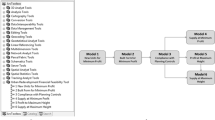Abstract
Computational Planning Support Systems (CPSS), associated with GIS-based instruments diffusion during the late 2000s, have allowed policymakers to better deal with urban areas’ rapid transformations. Still, CPSS often remains oriented to evaluate territories’ physical changes, focusing on socio-environmental perspectives of sustainable development, while considering the economic aspects of this issue as independent and abstract variables. In this regard, economic sustainability is often treated as more dependent on social relations than territorial characteristics, even if spatial analyses have potential to unveil attributes related to urban areas’ overall resilience. Real-estate values are one of such economic variables. Considered as derived from market relations, property values are also influenced by territorial constraints: nearness to central places and road-infrastructure. Such aspects, however, become less evident when regional areas considered. Exploring urban-regional dynamics in a GIS-based environment, this paper assesses productive areas’ real-estate values patterns throughout Tuscany, comparing them with the distribution of centralities hierarchies of the road-circulation network. It is observed that there are regional differences in the road-circulation network centralities distribution that lead to territorial disparities within the region, where preferential routes do not reach certain productive areas in the hinterland, resulting in sparse productive areas with low property values. In this sense, differences in placement and real-estate values may indicate areas that are territorially more exposed due to unfavorable road-network configuration, and those that tend to be more resilient, important prospects to consider in CPSS with respect to long-term economic sustainability.
Access this chapter
Tax calculation will be finalised at checkout
Purchases are for personal use only
Similar content being viewed by others
References
Agenzia delle Entrate (2020) Osservatorio Mercato Immobiliari (OMI): Quotazioni Immobiliari. Accessed in 30 Jul 2020
Britton H, Batty M (1993) Locational models, geographic information and planning support systems. J Plan Edu Res 12(3):184–198
Fujita M, Krugman P, Venables A (1999) The Spatial Economy: Cities. MIT Press, Massachusetts, Region and International Trade
Harvey D (2001) Spaces of capital: towards a critical geography. Edinburgh University Press, Edinburgh
Hillier B, Yang T, Turner A (2012) Normalising least angle choice in Depthmap—and how it opens up new perspectives on the global and local analysis of city space. J Space Syntax 3(2):155–193
QGIS 3.12.: ‘Bucaresti’. https://www.qgis.org/en/site/forusers/download.html
Regione Toscana (2007) Direzione Urbanistica e Politiche Abitative—Sistema Informativo Territoriale e Ambientale—SITA.: Uso e Copertura del Suolo 2007–2016. Accessed in 30 Jul 2020
Regione Toscana (2020) Direzione Urbanistica e Politiche Abitative—Sistema Informativo Territoriale e Ambientale—SITA.: Grafo stradario e ferroviario della Regione Toscana. Accessed in 30 Jul 2020
Richardson HW (1970) Regional economics: a reader. Macmillan, London
Turner A (2001) Angular analysis. In: Peponis J, Wineman JD, Bafna S (eds) Proceedings of the 3rd International Symposium on Space Syntax, pp 7–11. Georgia Institute of Technology, Atlanta, Georgia
Author information
Authors and Affiliations
Corresponding author
Editor information
Editors and Affiliations
Rights and permissions
Copyright information
© 2021 The Author(s), under exclusive license to Springer Nature Switzerland AG
About this paper
Cite this paper
Altafini, D., Pozzobon, E., Rusci, S., Cutini, V. (2021). Computational Planning Support Systems for Regional Analysis: Real-Estate Values Dynamics and Road-Networks Configuration. In: La Rosa, D., Privitera, R. (eds) Innovation in Urban and Regional Planning. INPUT 2021. Lecture Notes in Civil Engineering, vol 146. Springer, Cham. https://doi.org/10.1007/978-3-030-68824-0_32
Download citation
DOI: https://doi.org/10.1007/978-3-030-68824-0_32
Published:
Publisher Name: Springer, Cham
Print ISBN: 978-3-030-68823-3
Online ISBN: 978-3-030-68824-0
eBook Packages: HistoryHistory (R0)




